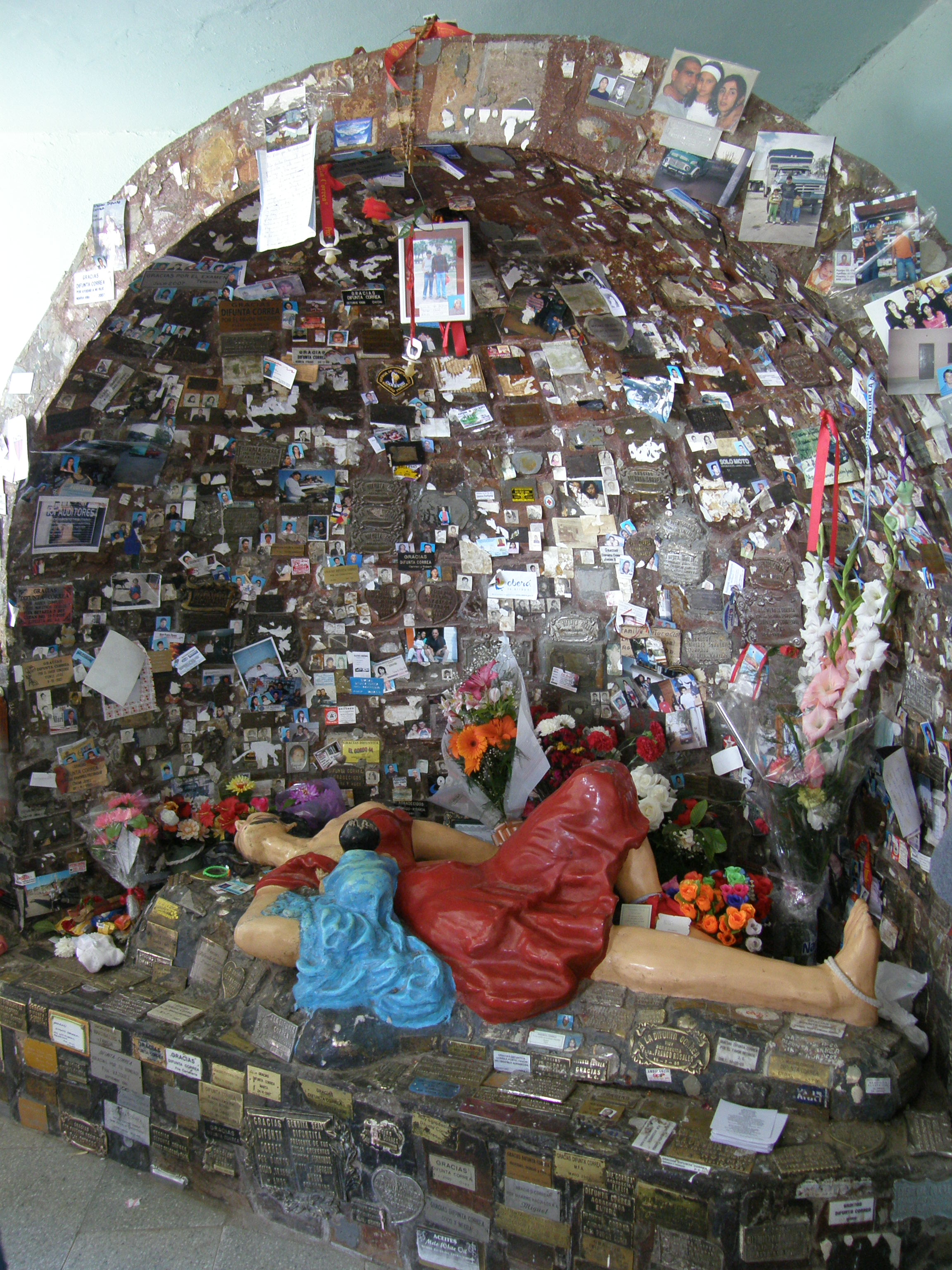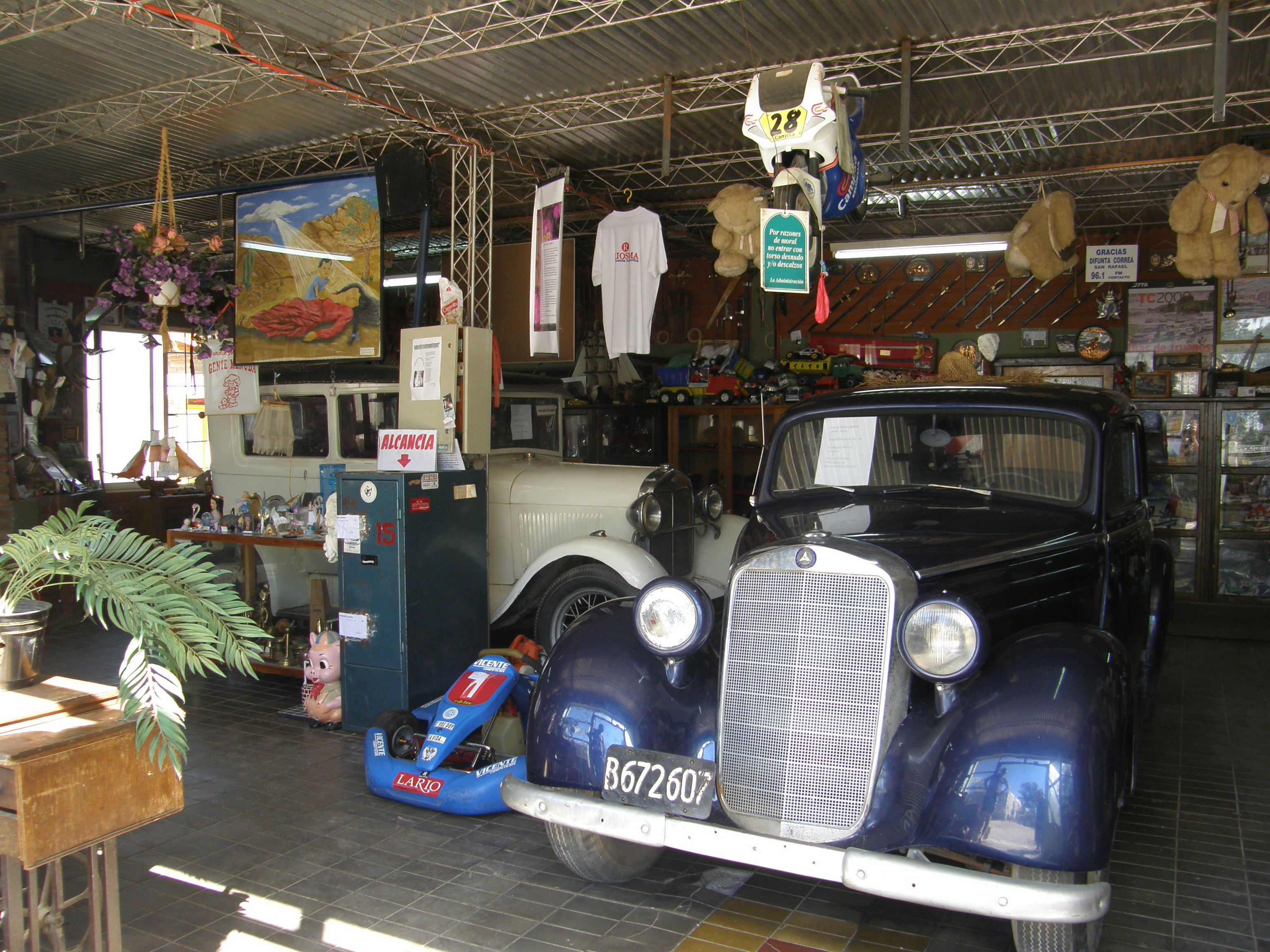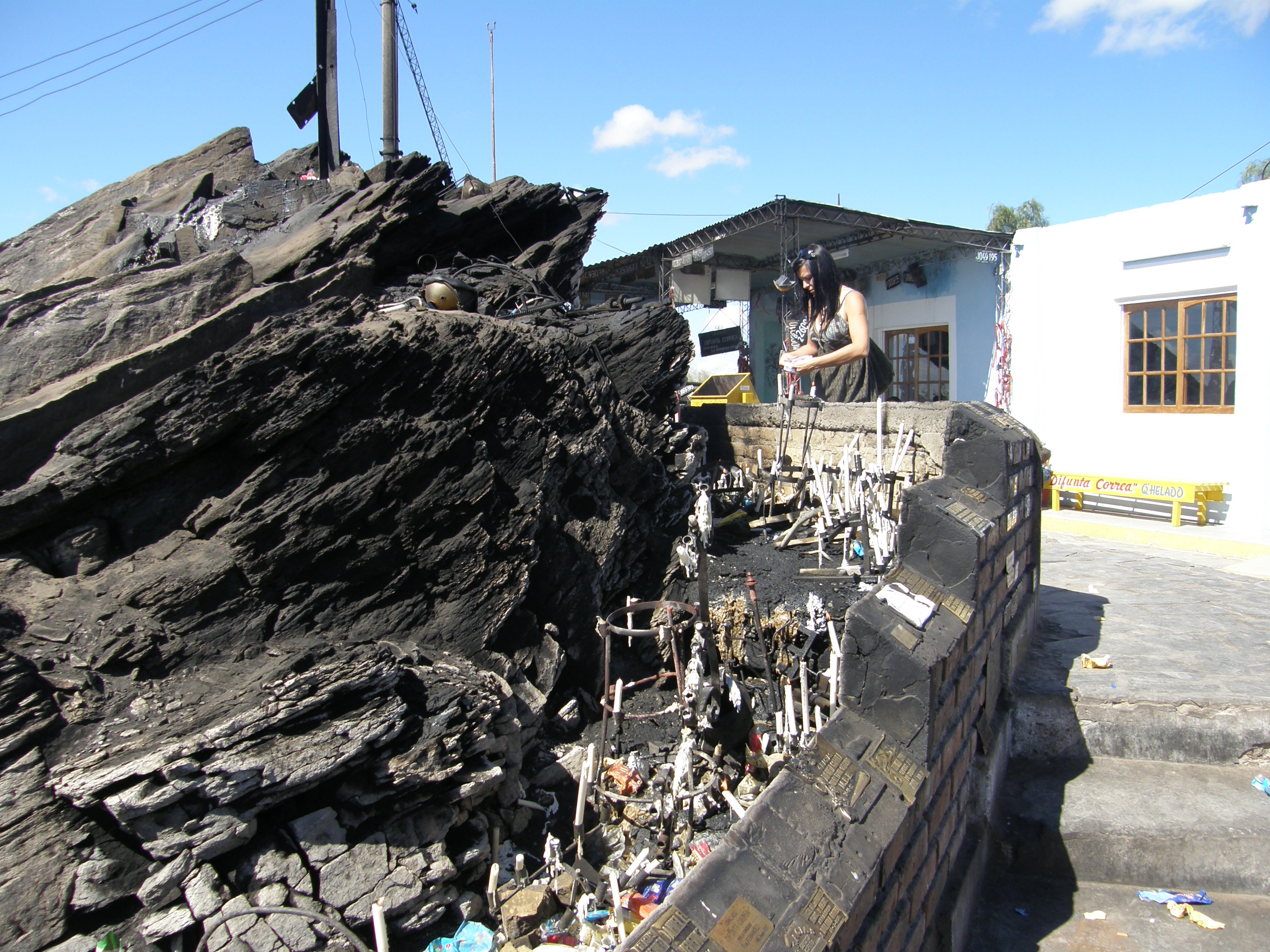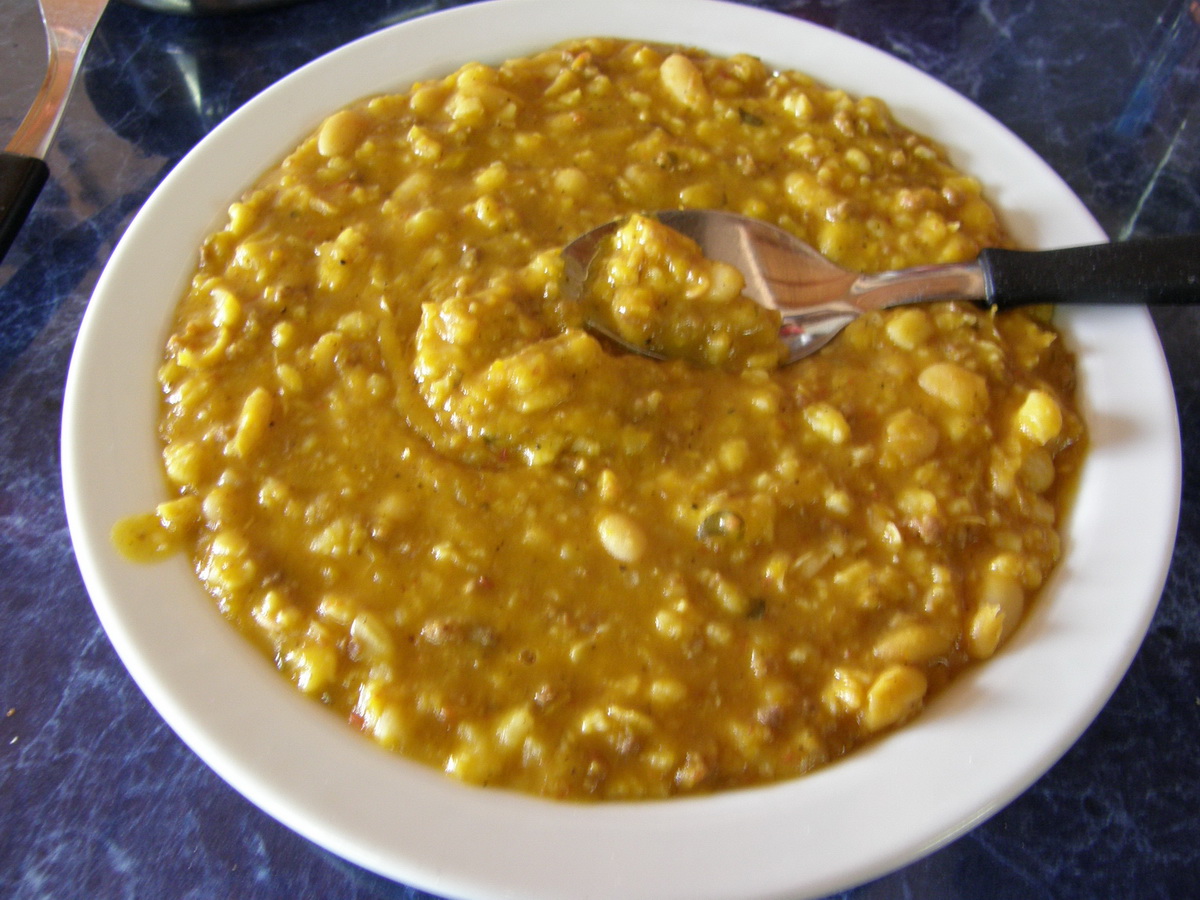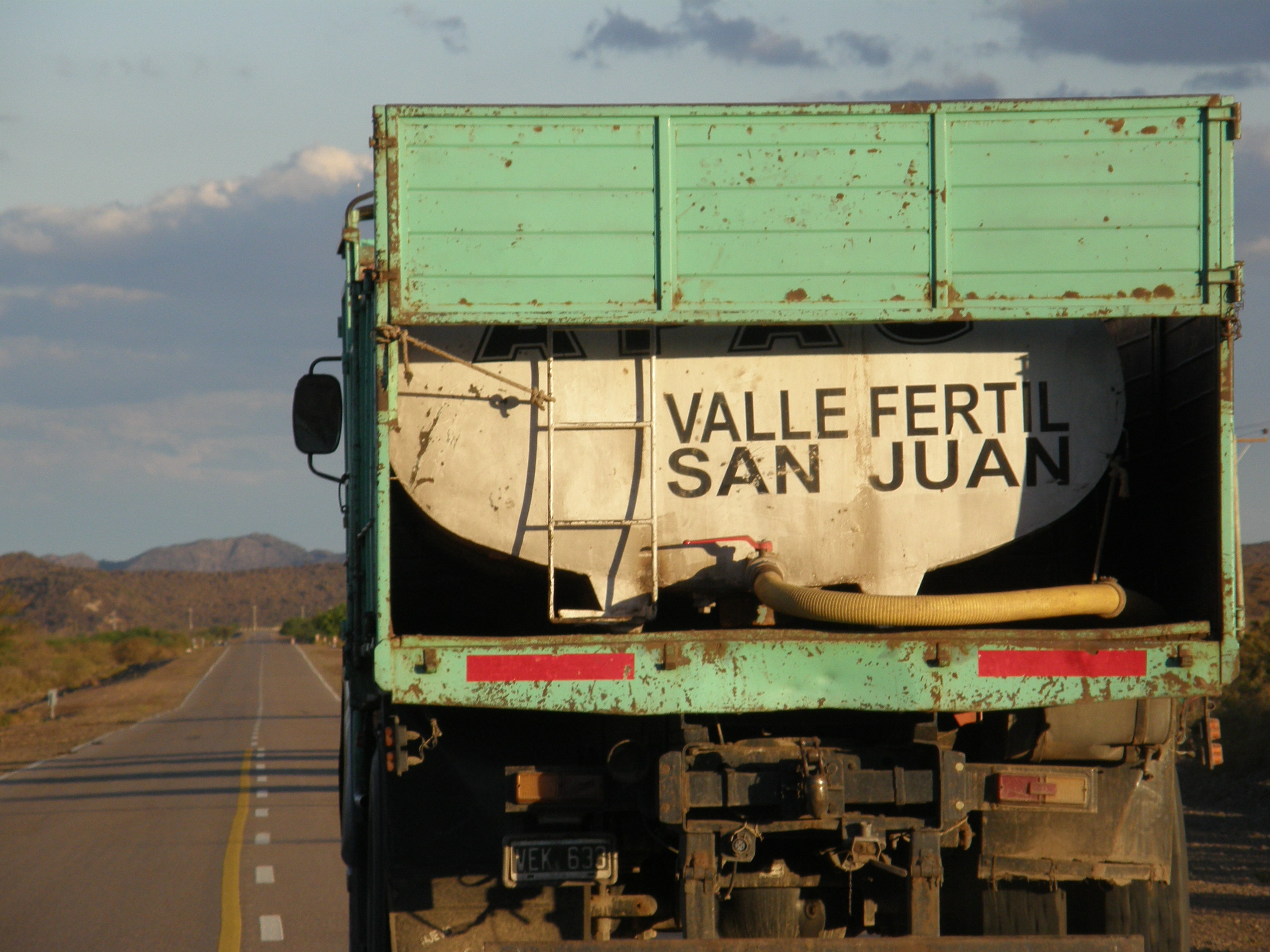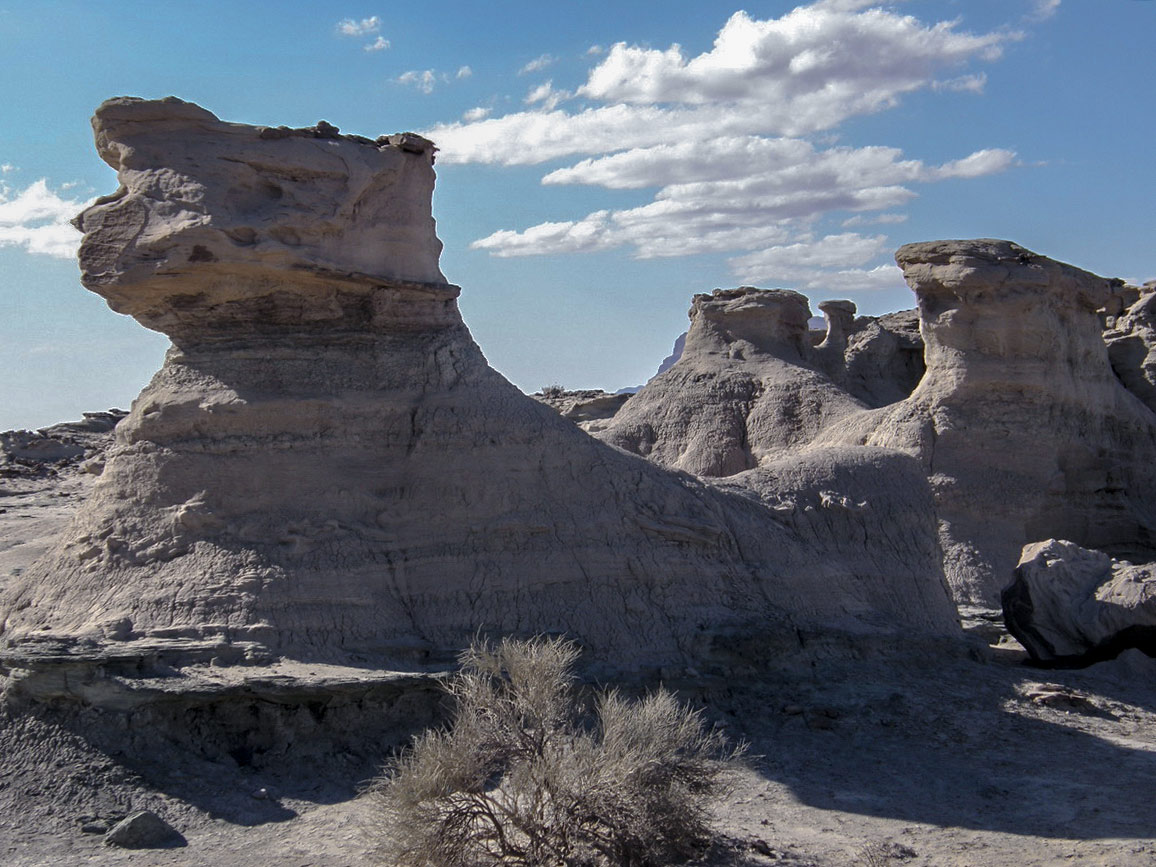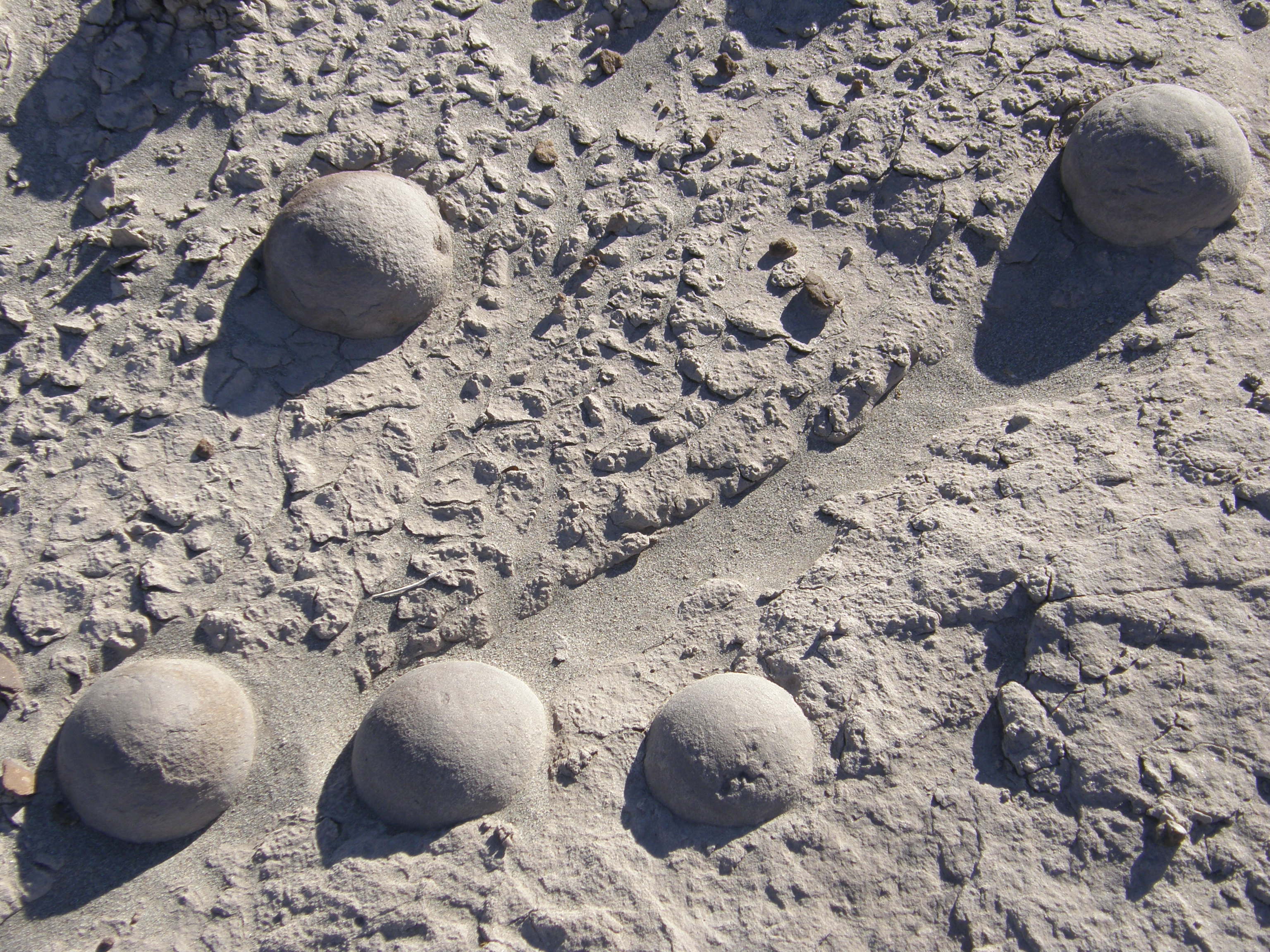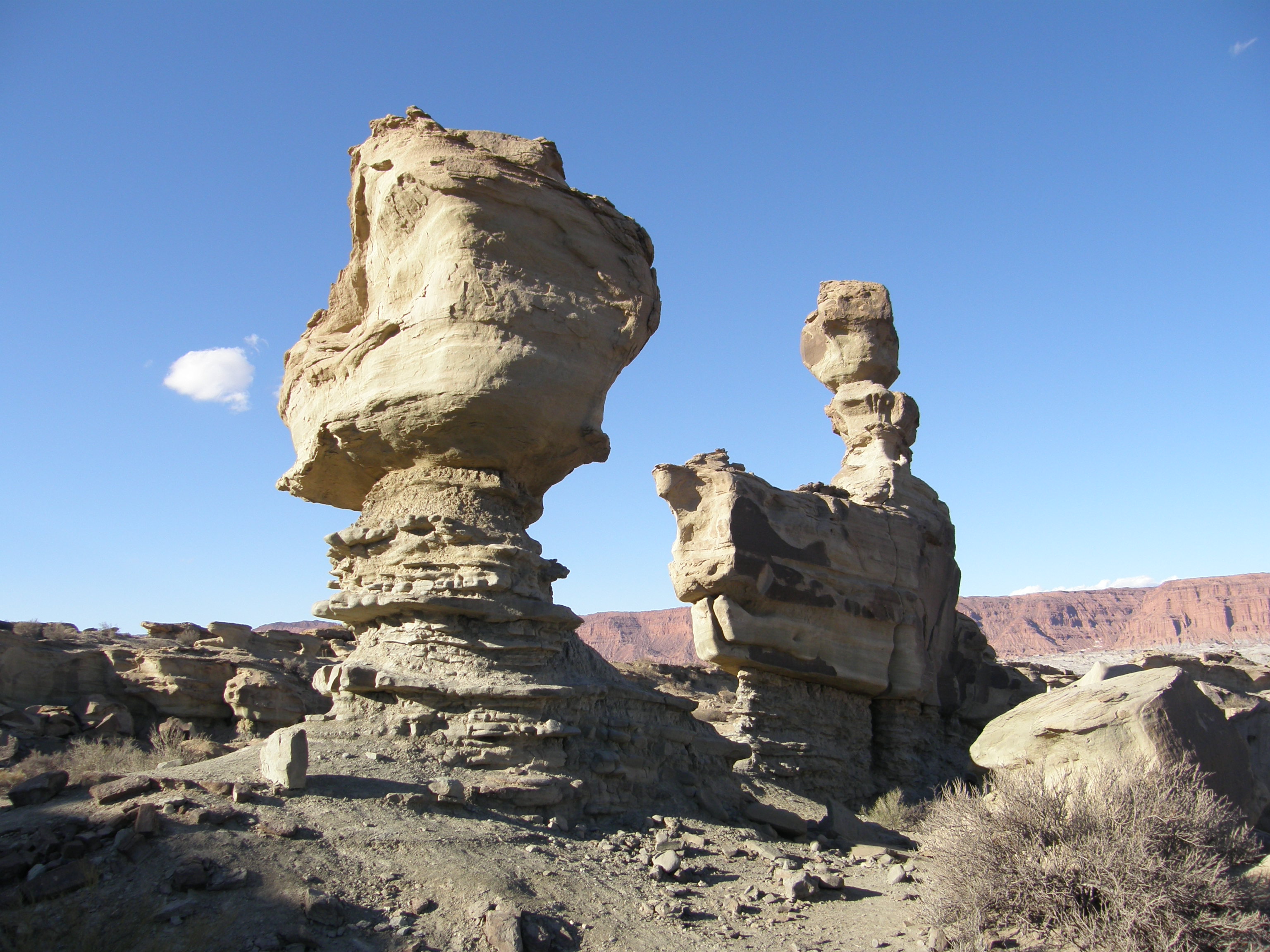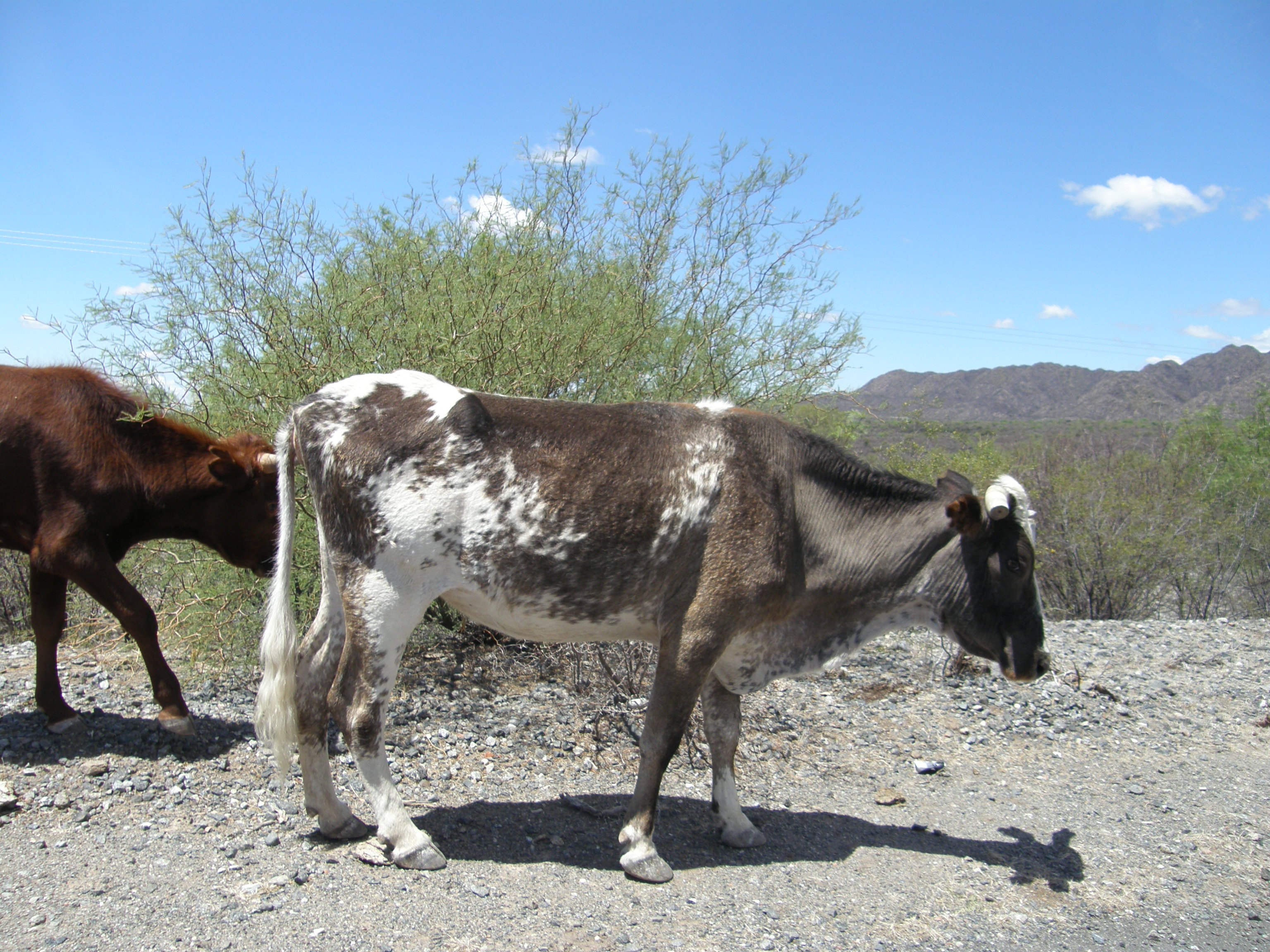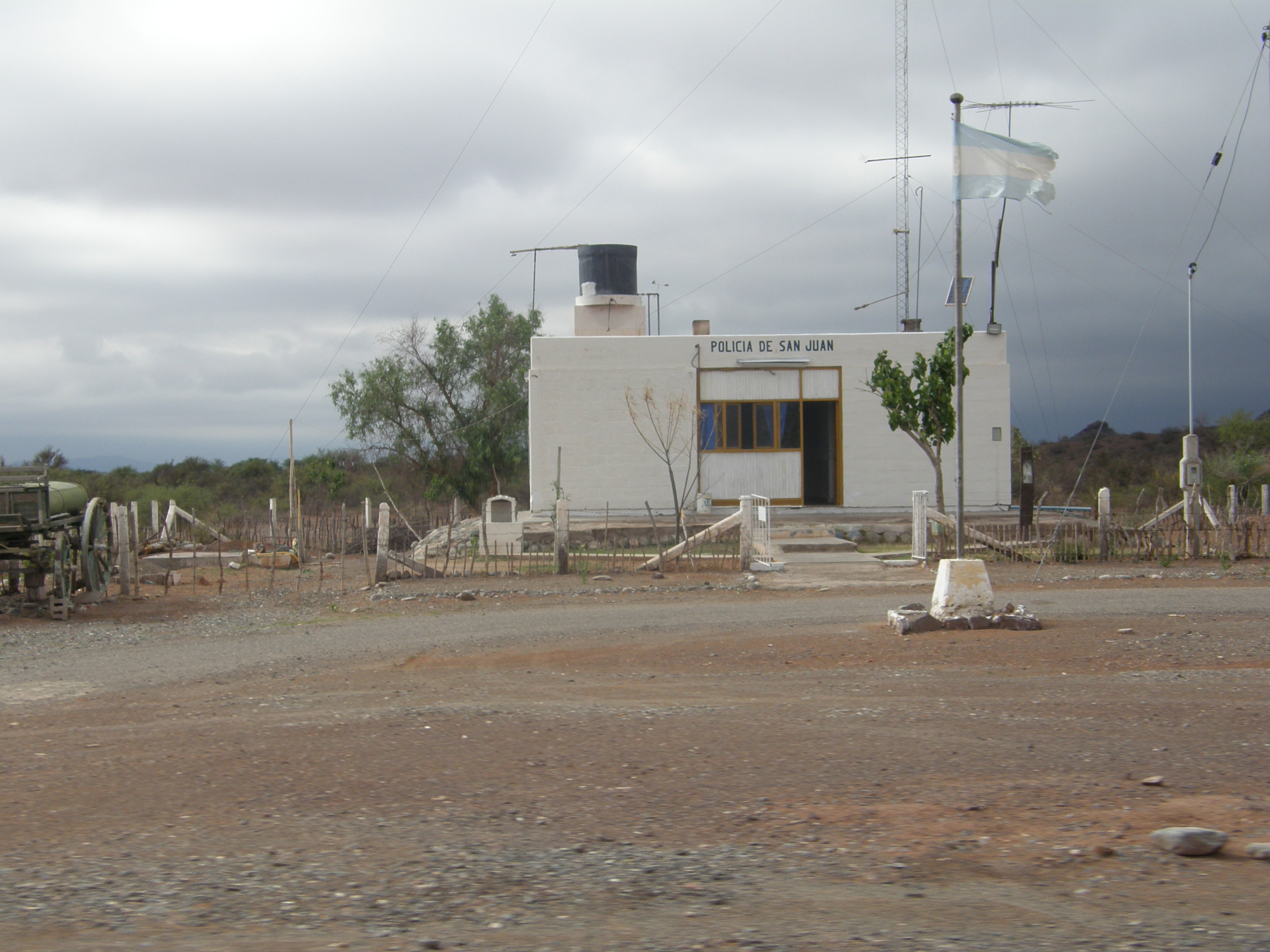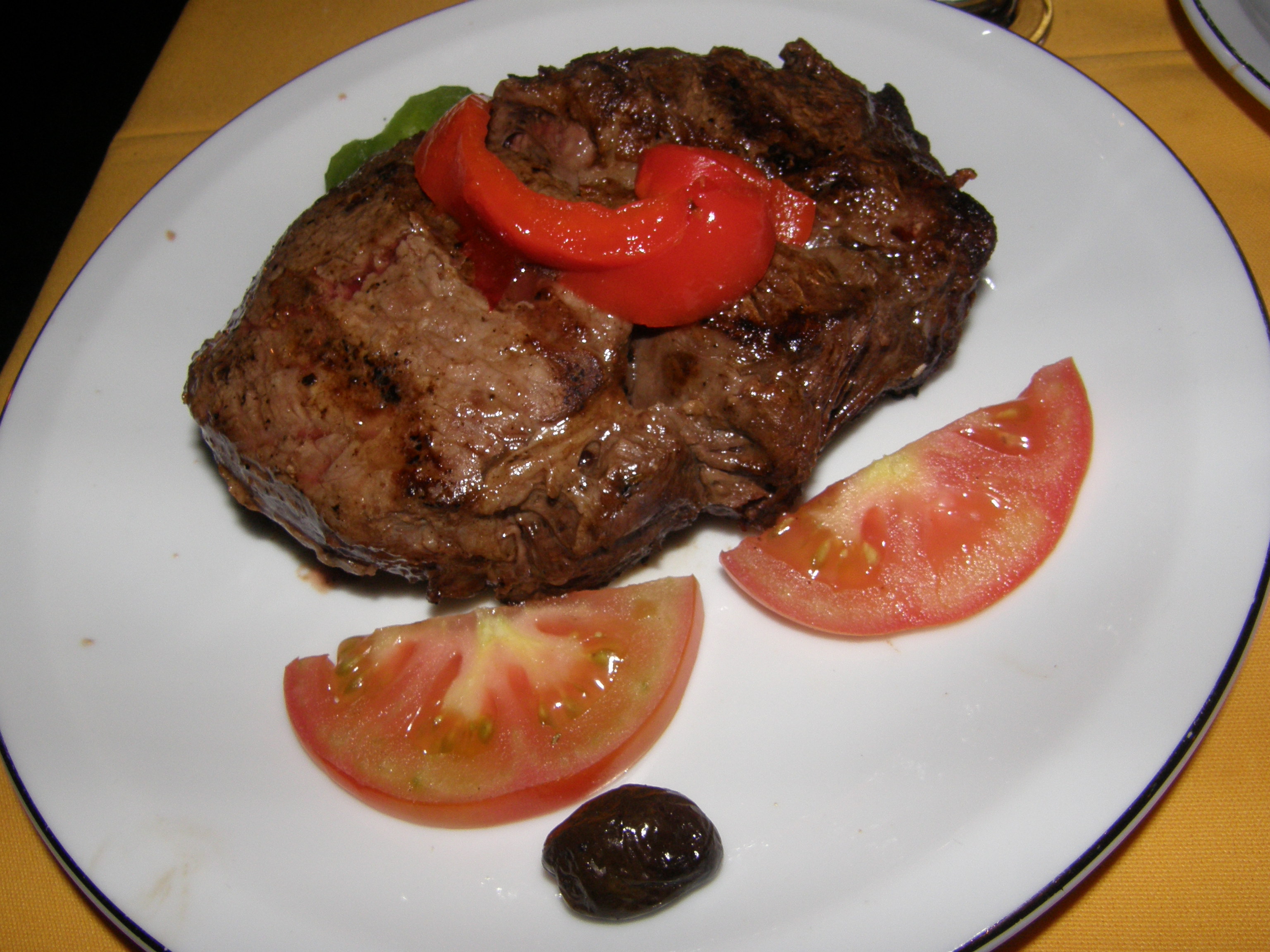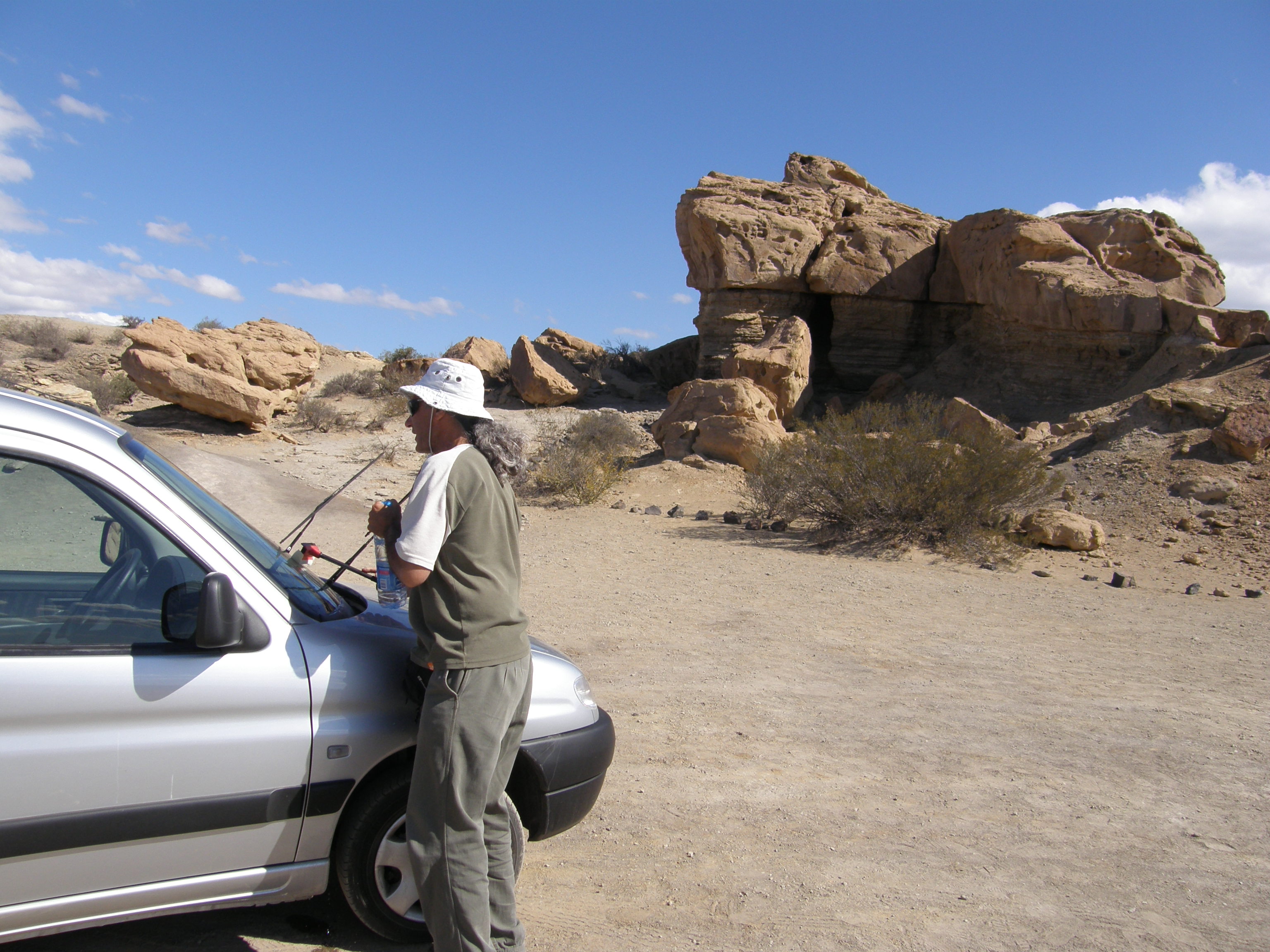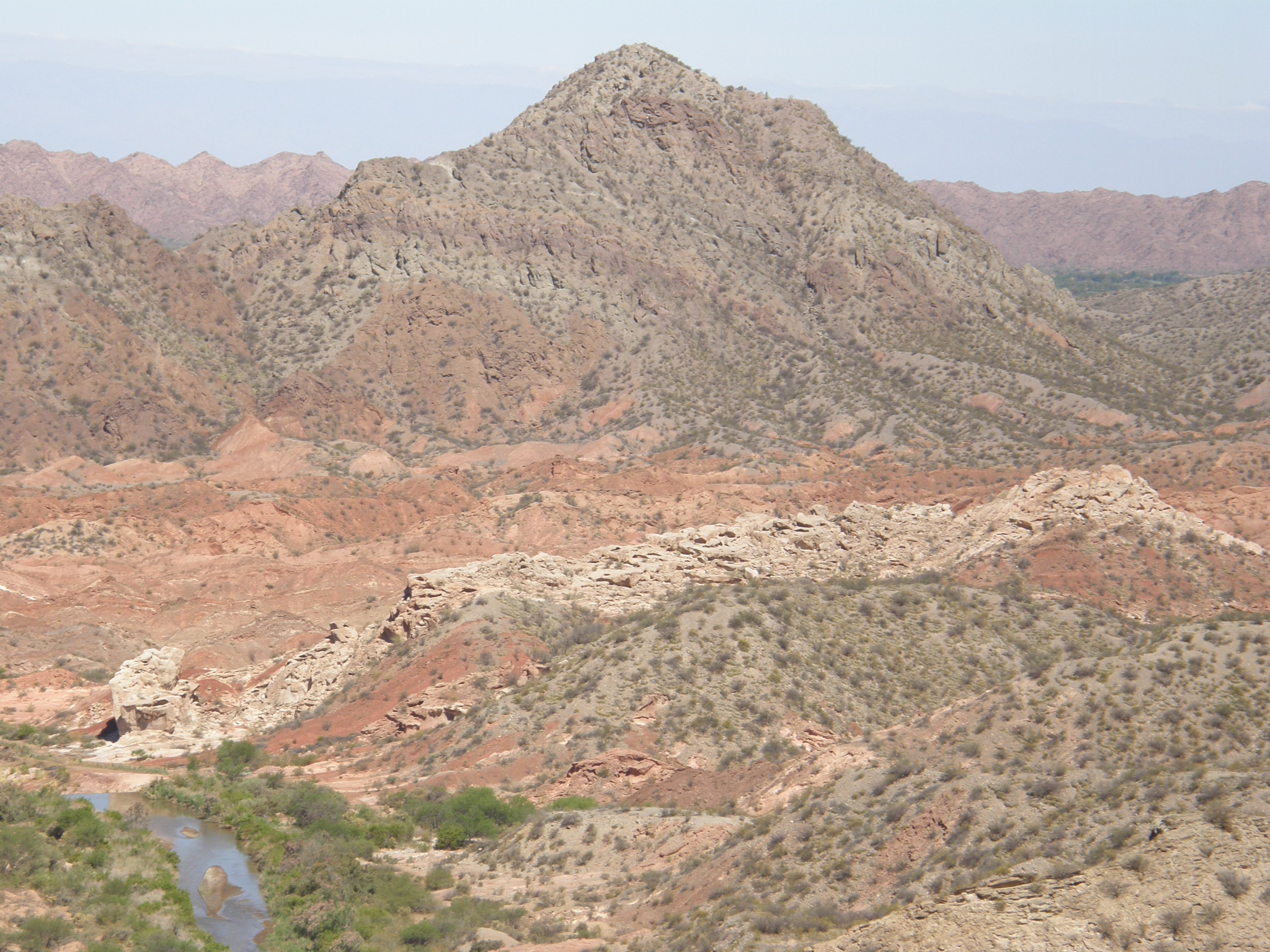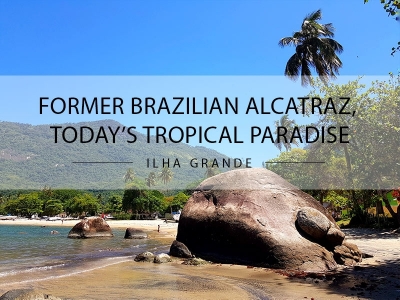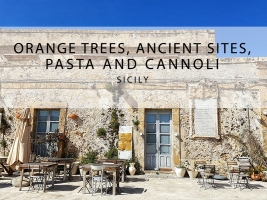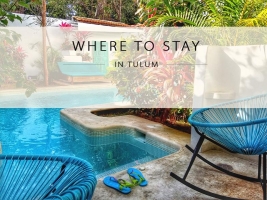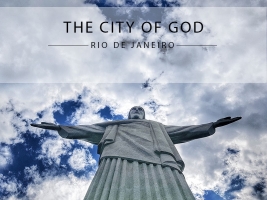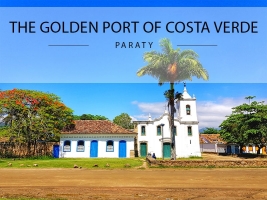From the eponymous capital city of the province, which was rebuilt following the earthquake of 1944, me, my friend and our guide Marcelo headed out to the unspoilt soul of this land, baked to a crisp by the sun. The three-hour drive through the vineyards on the outskirts of the city, spanning embankments and dams, that were designed to provide water to the dehydrated soil, through the Calingasta Valley, poplar and mint plantations, finally brought us to Ischigualasto National Park and the amazing Moon Valley.
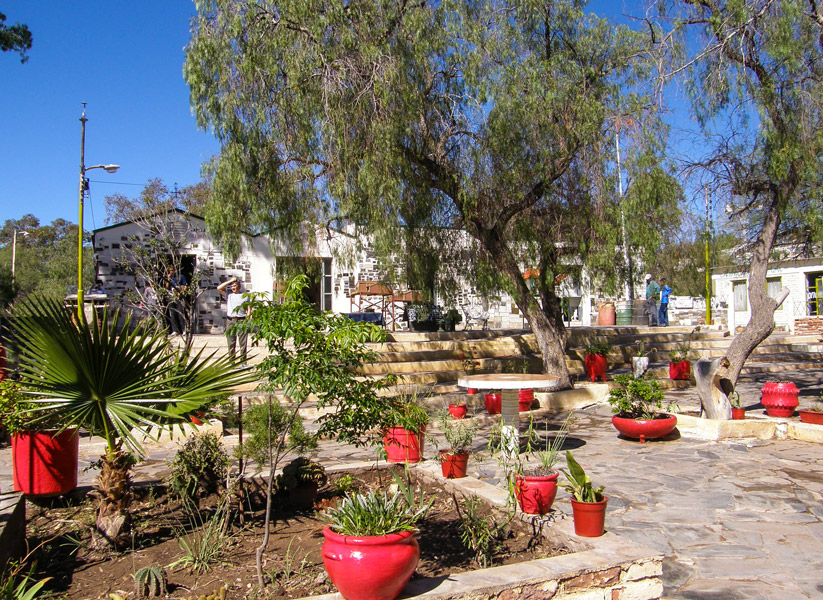
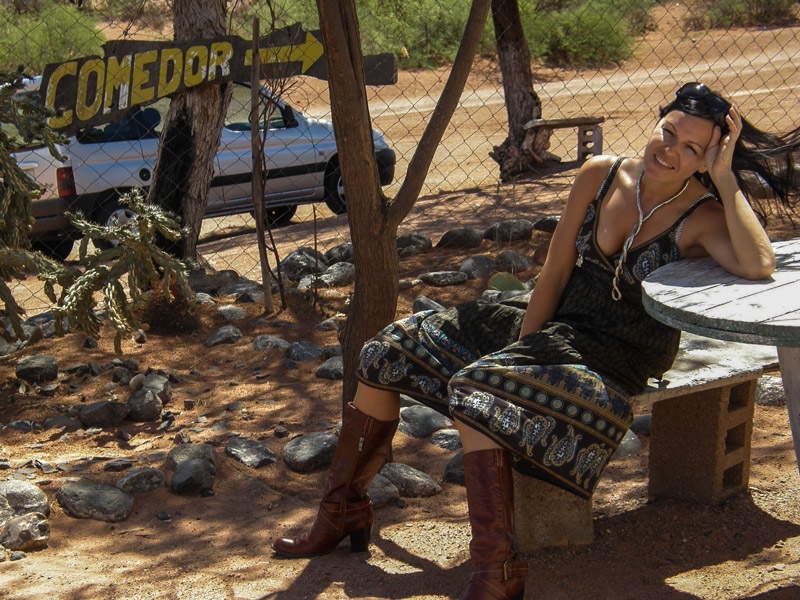
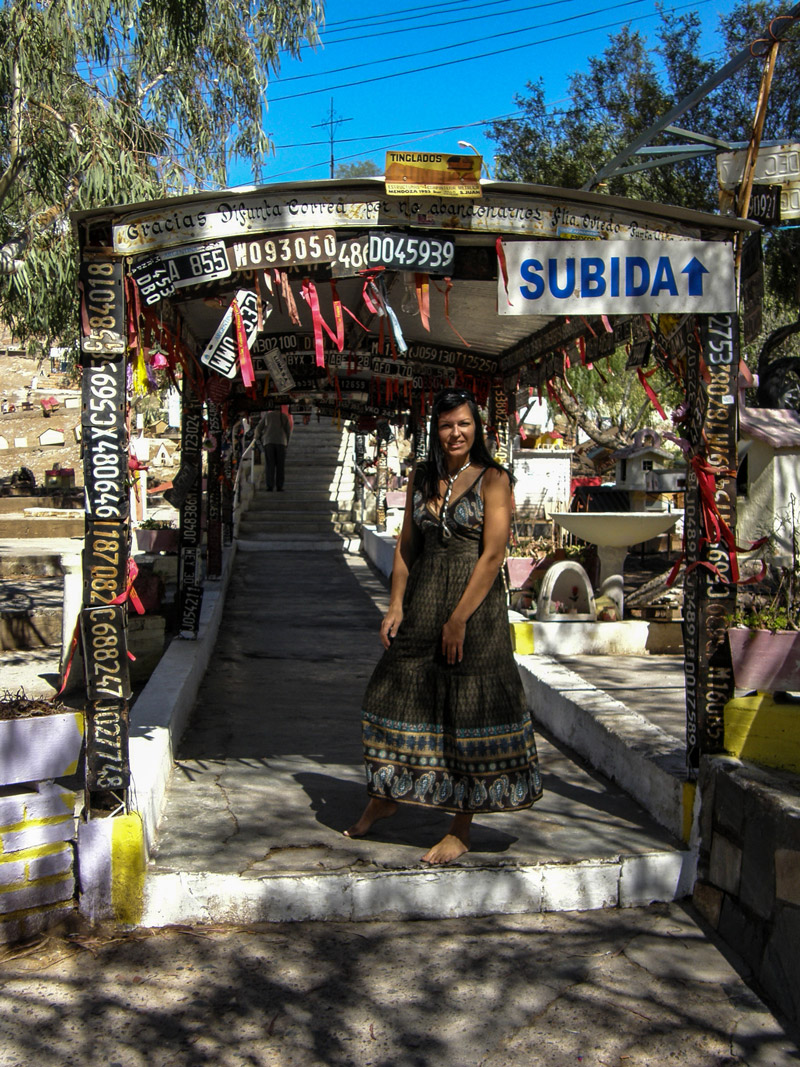
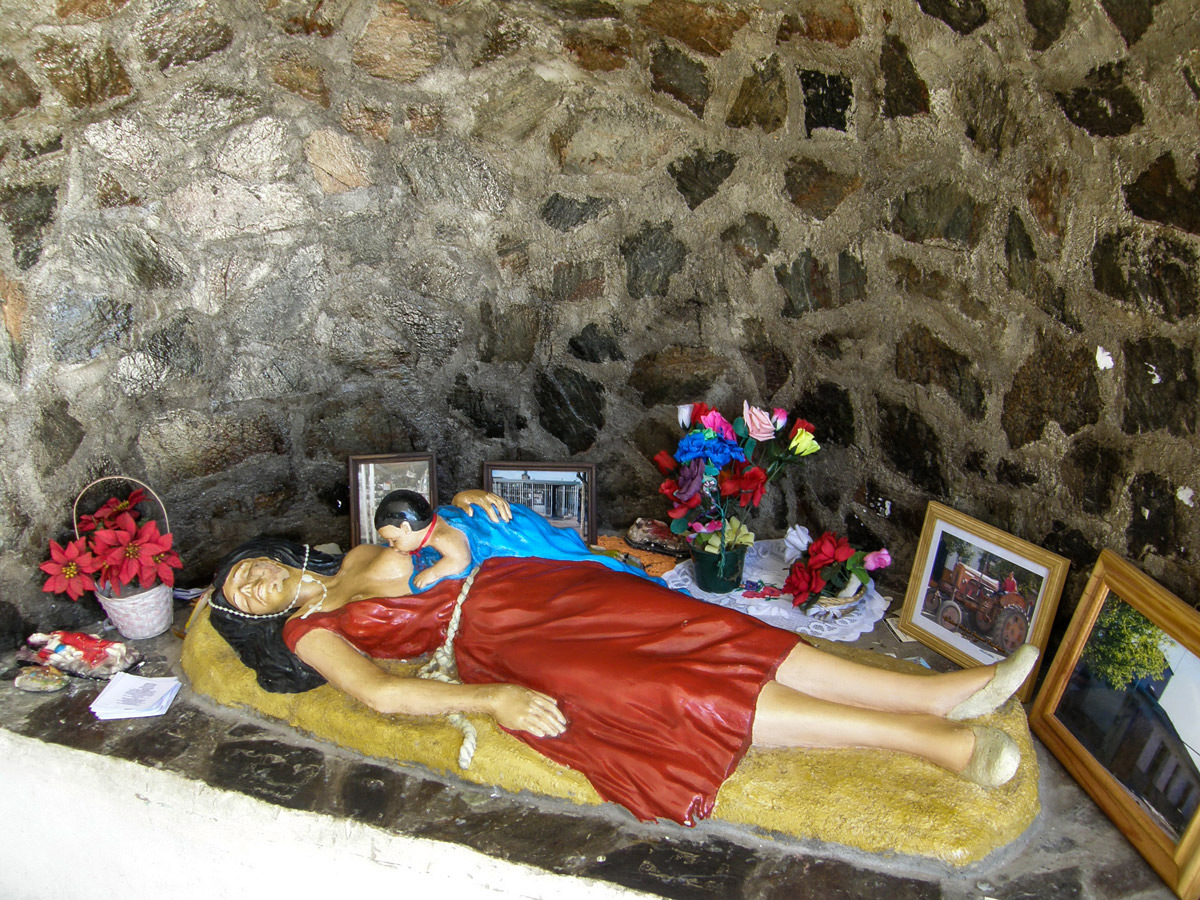
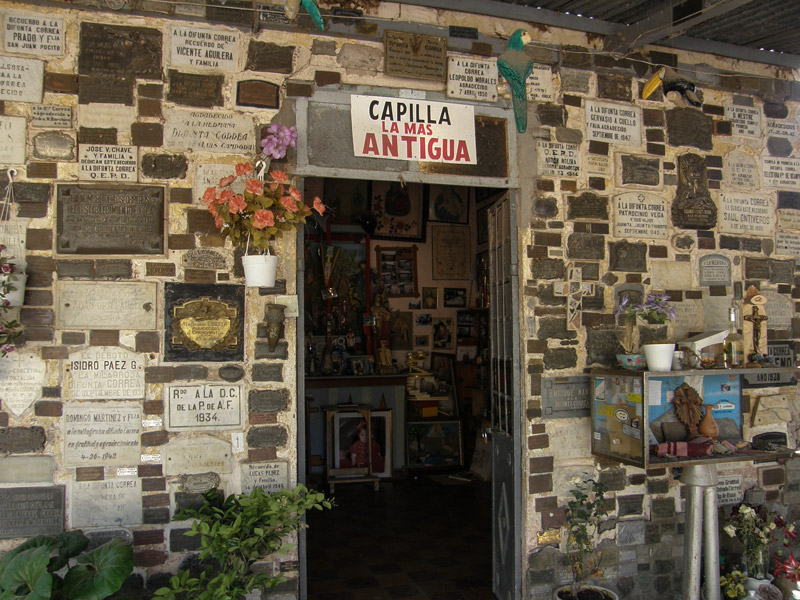
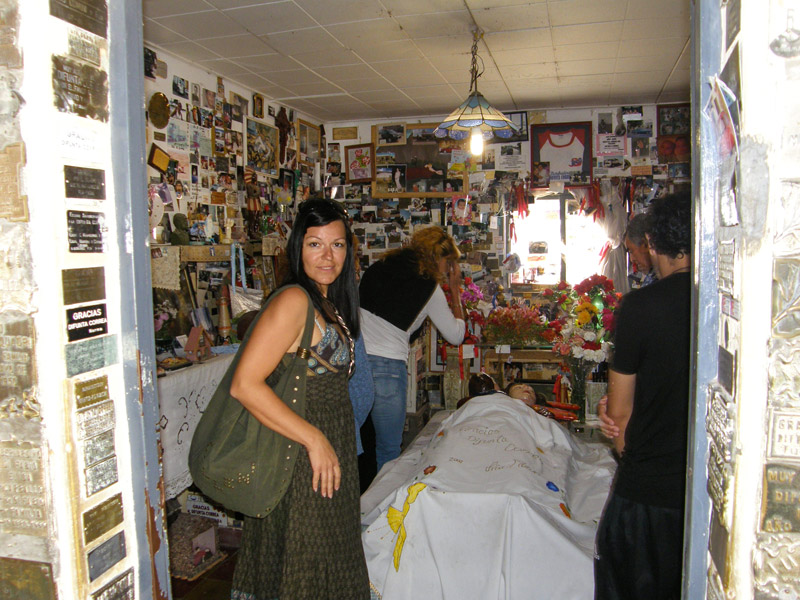
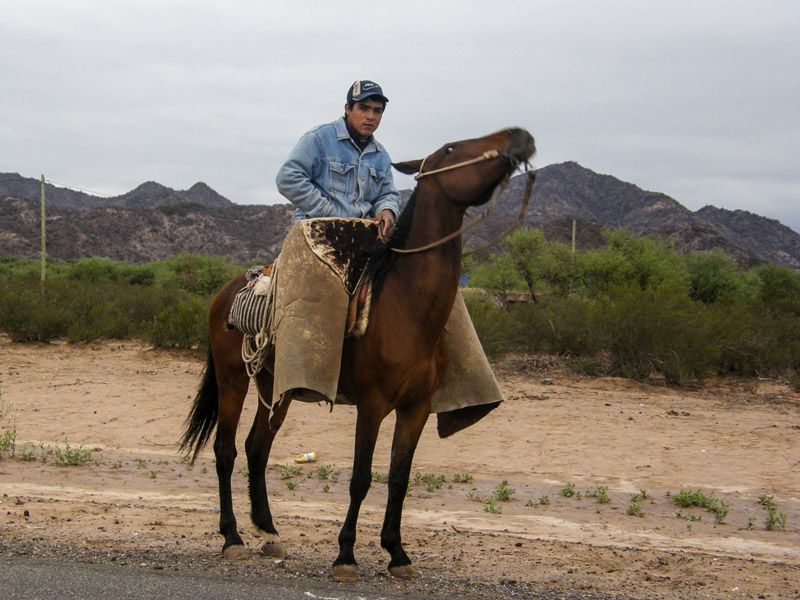
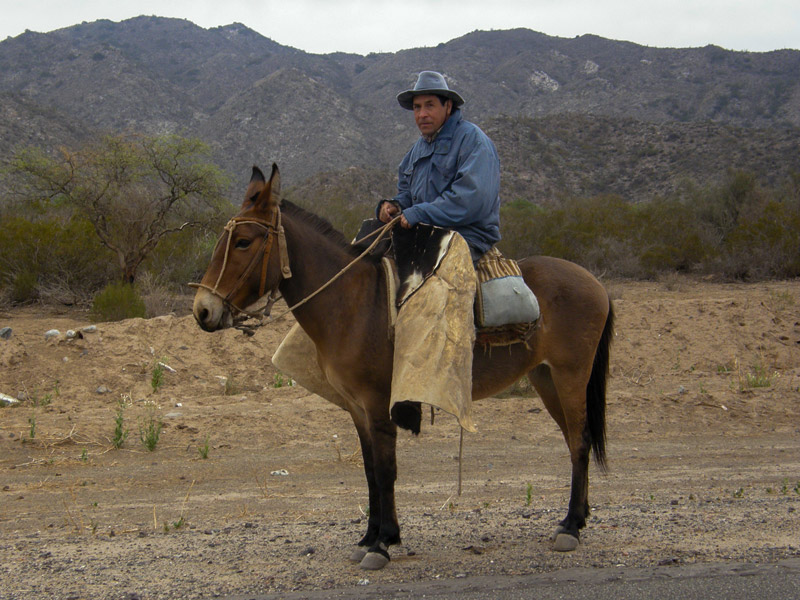
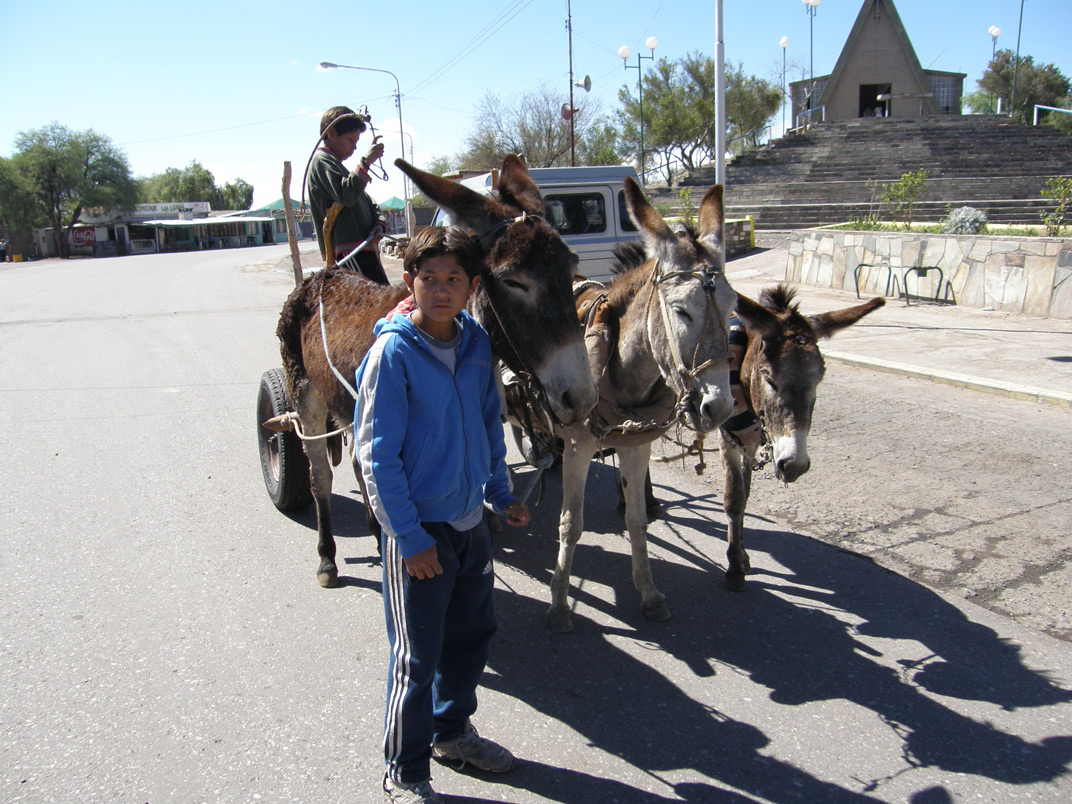
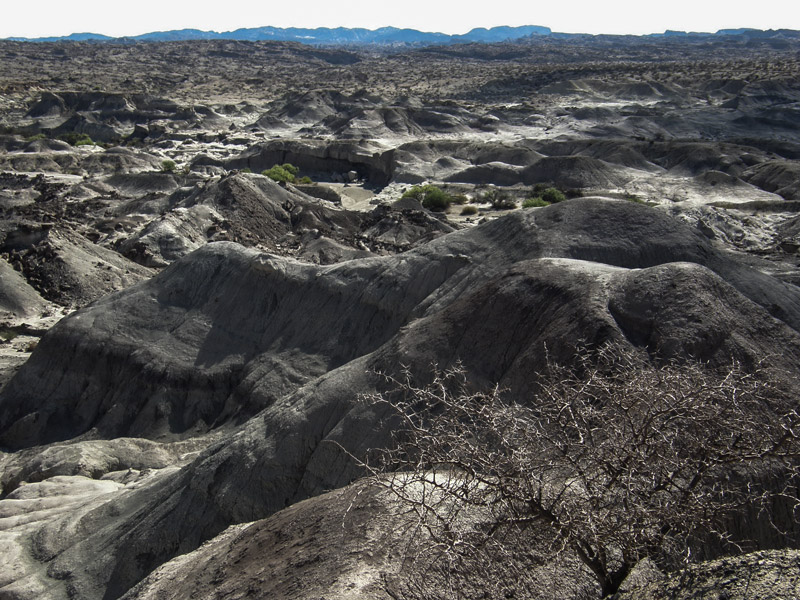
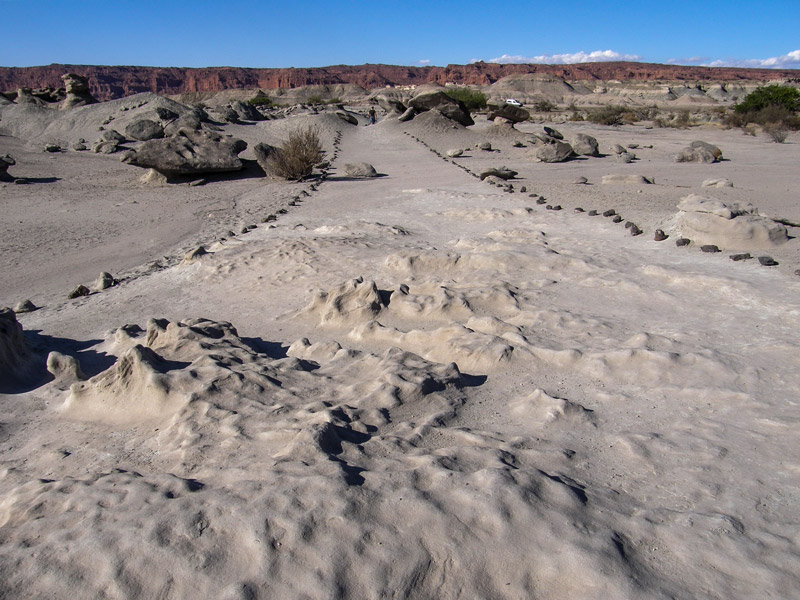
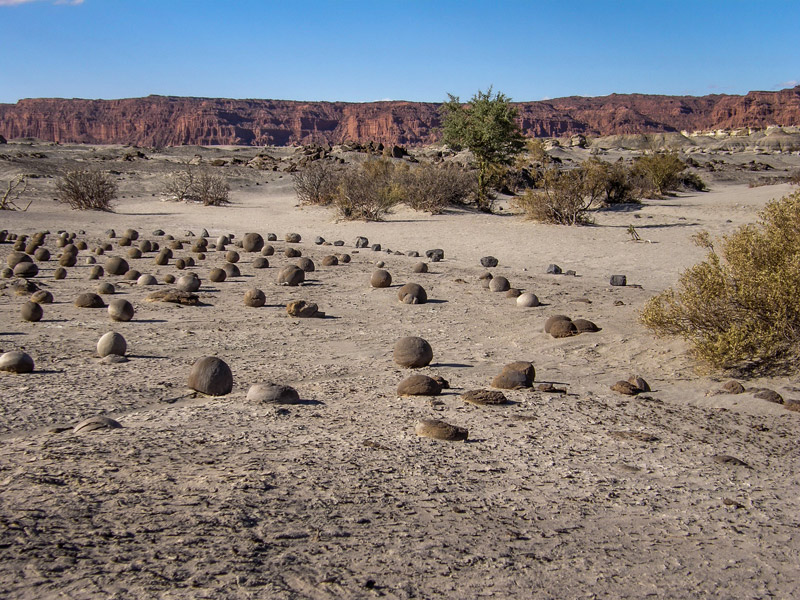
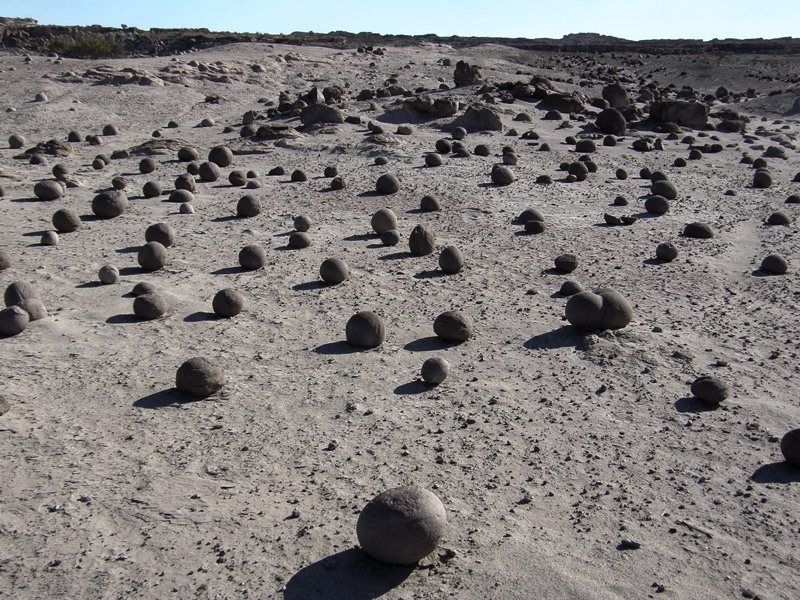
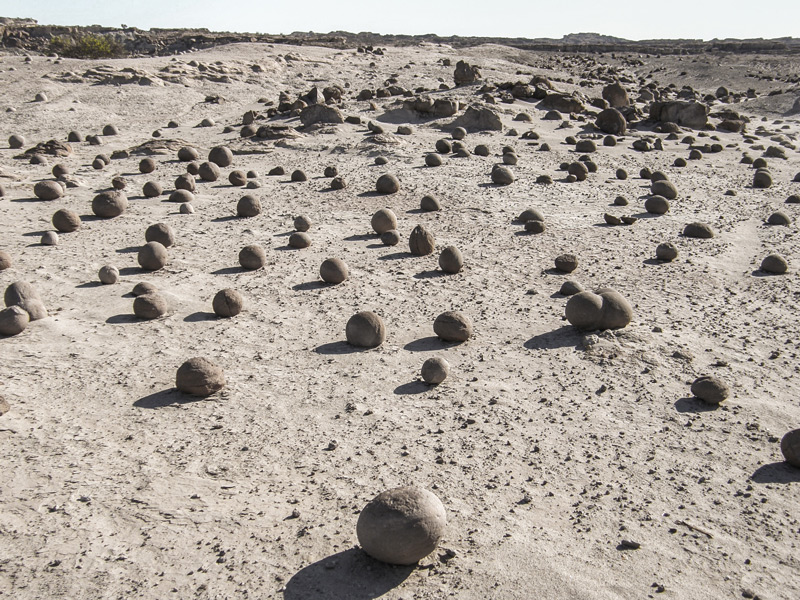
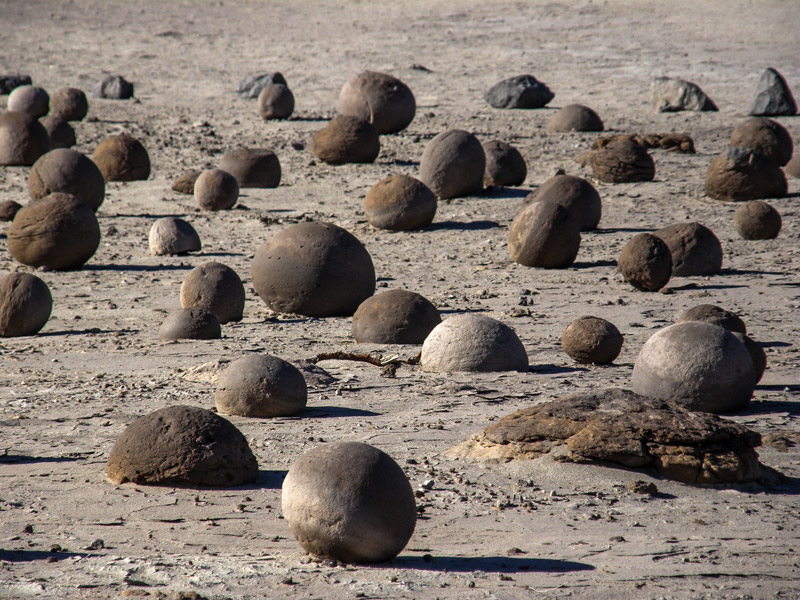
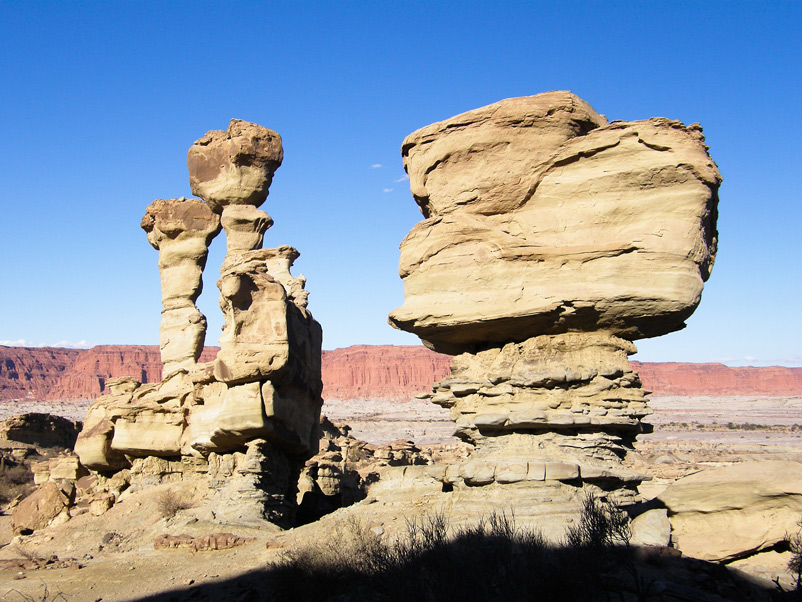
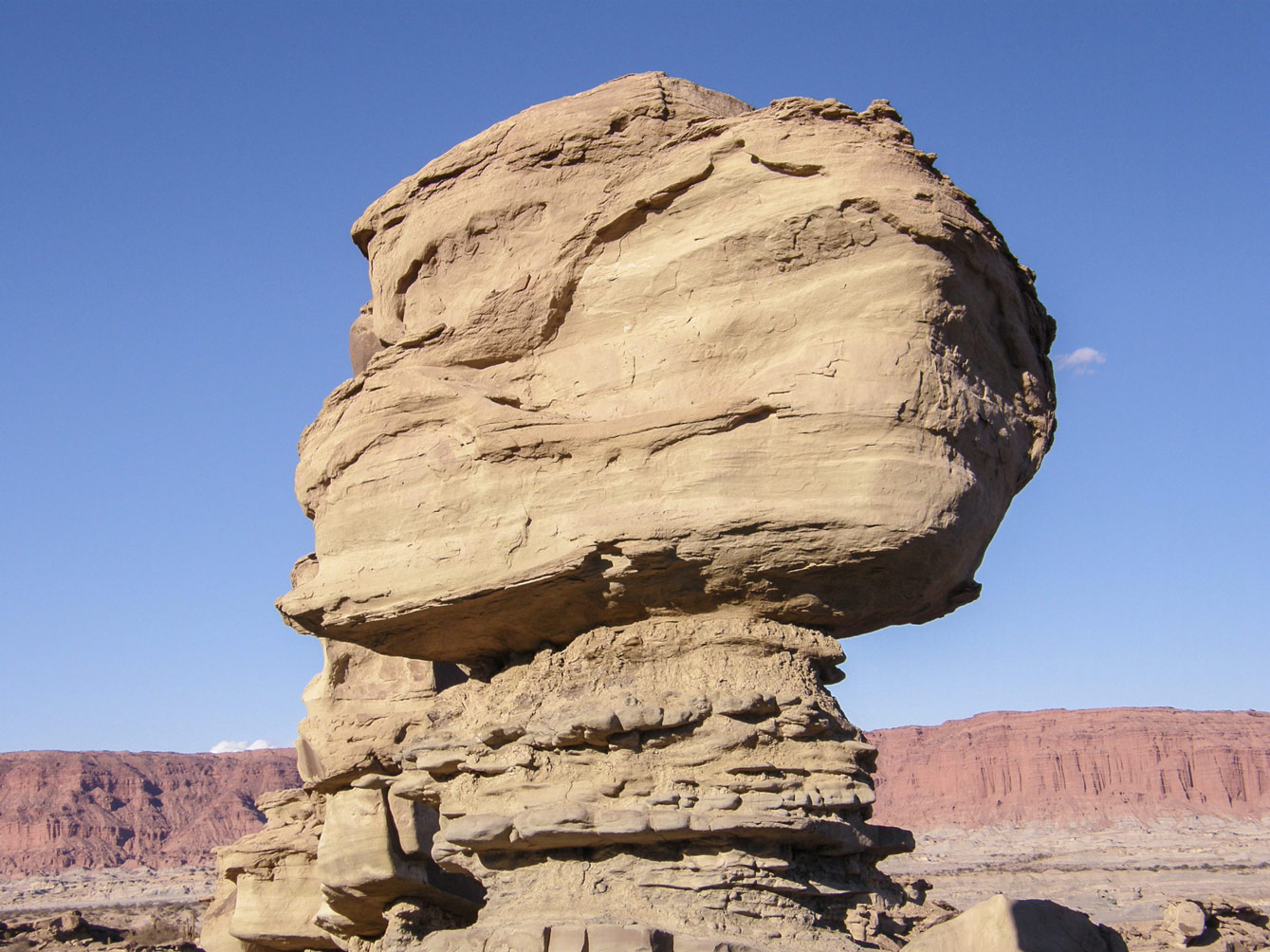
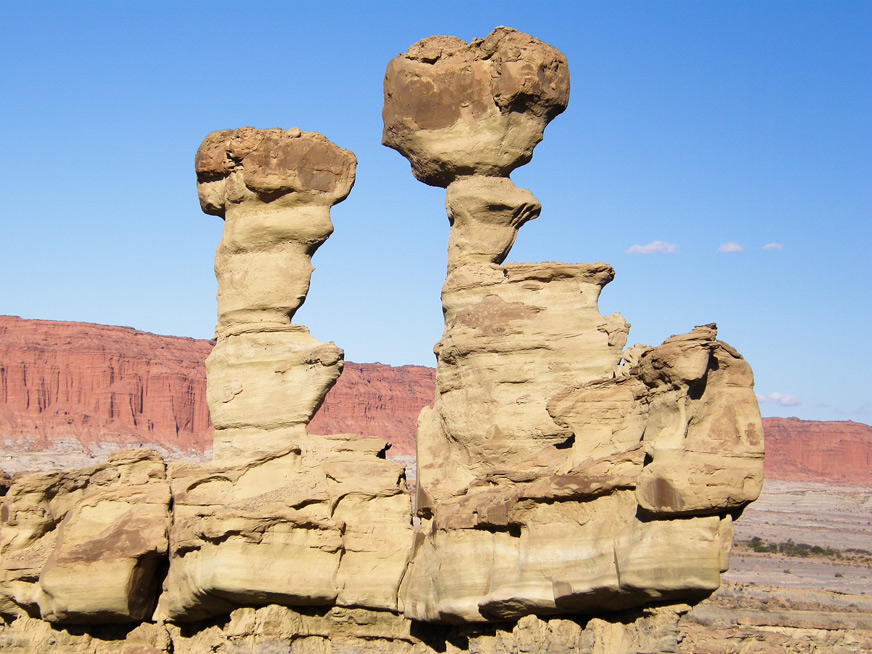
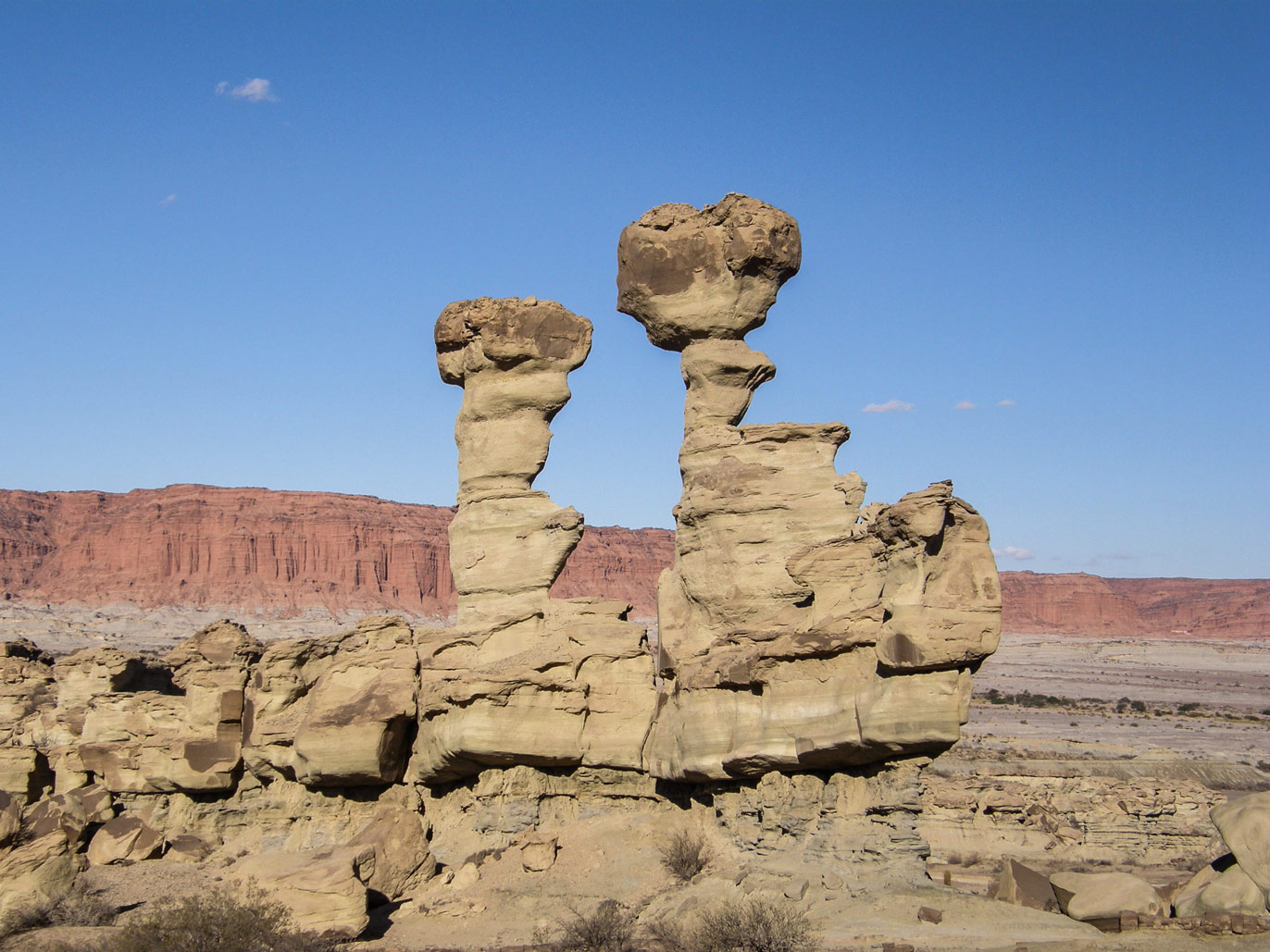
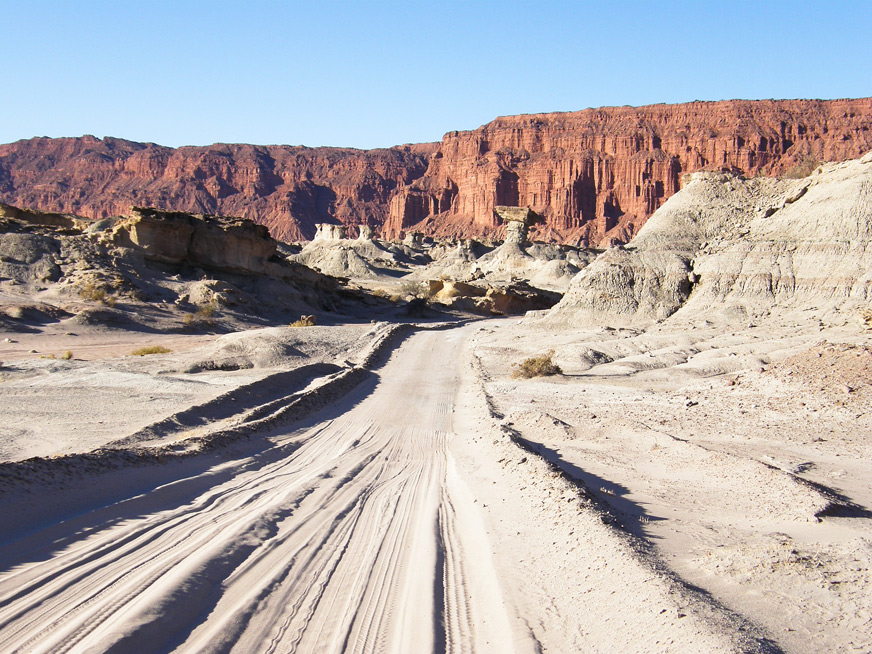
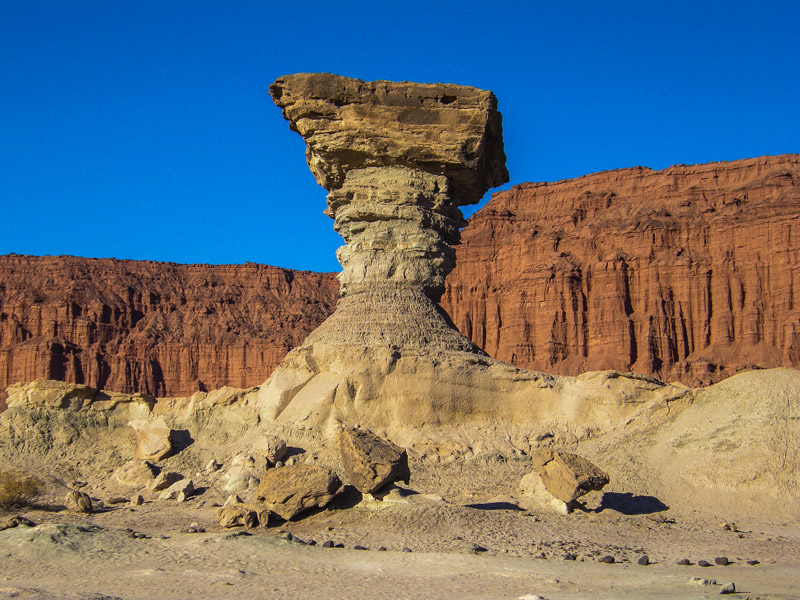
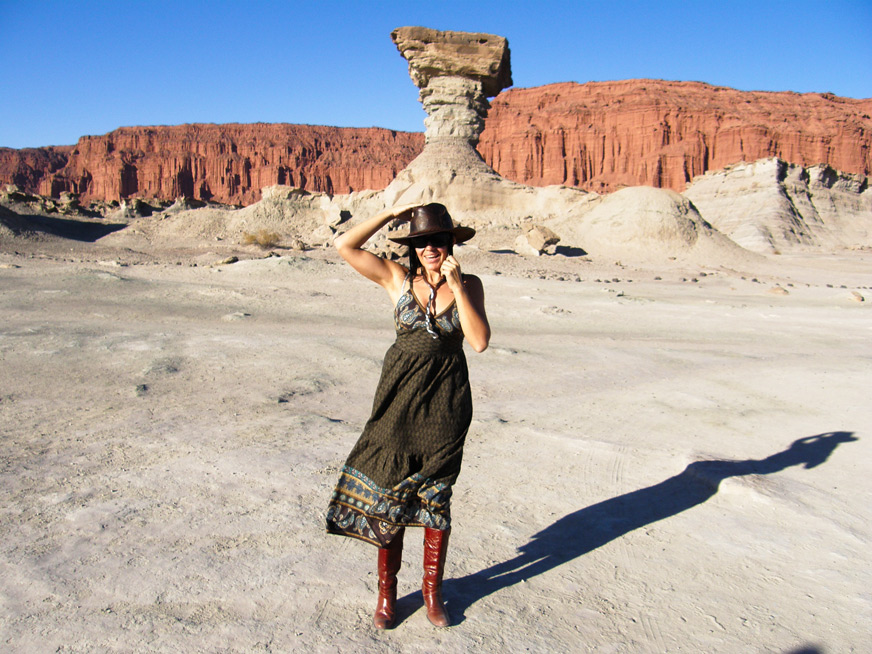
La Difunta Correa
The boundless land at the edge of the Andes is confined by two mountain ranges: the Sierras Pampeaneas on the left, which are older than the foothills of the Andes and the pre-Andean Cordilliera. Occasionally we encountered some trucks, which were transporting water to the remote village of Valle Fertil. Sometimes in spring after heavier rainfall the landscape becomes a flowering desert and is transformed into a colourful quilt. Every so often, following heavy rain, seasonal lakes called 'aguada' pop up and remain on the surface for no longer than a month.
On the road we passed a motley group: the adorable children riding a donkey, an emaciated horse and a fairly well preserved bicycle. They were on their way to school, which is located in the middle of the desert some five kilometres from their village. There were also a few cyclists on their way to a pilgrimage to the village of Difunta Correa (roughly: the late Correa). Our first stop was Valle Fertil, a village without any source of water whatsoever, where water has to be delivered daily in tankers.
Marcelo told us an interesting story of a woman called Correa, who wandered these parts for several days around 1850 with her baby in tow. She eventually succumbed to dehydration, but her child survived, because it fed on the dead mother’s breastmilk. Hence, the village was named after her and people from all over the country honour her daily by bringing full plastic water bottles to the hilltop rising above it. A dense cluster of one-room brick huts can be seen at the foot of the hill, each of them serving as a kind of storage for the offerings brought, sorted by themes: there is a hut for hauliers with model trucks, licence plates and car wheel rims, a hut featuring donated wedding dresses, a hut with trophies and cups won at various competitions, a hut with musical instruments and so on. Each of the gifts comes with a thank-you note, engraved on a metal plate. In a tiny chapel atop the hill lays a plaster figure of a red-clad woman, holding a child on her breasts. People venture up there to pray and light candles. It has been said that the statue makes wishes come true.
El Valle de la Luna
Just around the corner – although I use this phrase in its most metaphorical sense as the first neighbour is about three-hour drive away – we were suddenly thrown into a whole other universe, as we stepped into the magnificent Moon Valley (El Valle de La Luna). It felt like we were observing Earth from another planet. This was the moment when you could set aside the chaos of your everyday life. We were warned that cougars roam these parts, so we had to make sure to check over the shoulders every now and then. What impressed me the most: the balls ...

